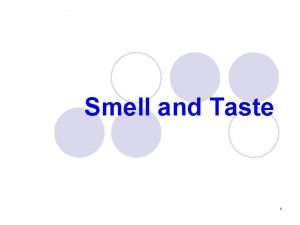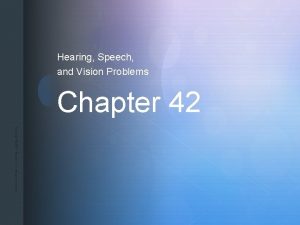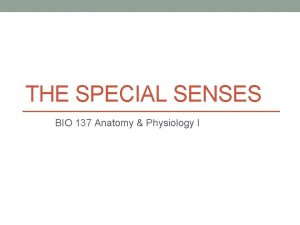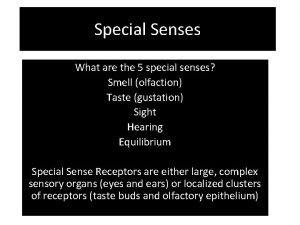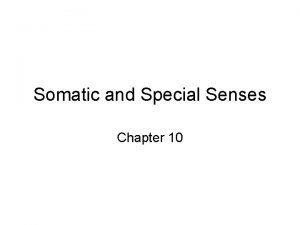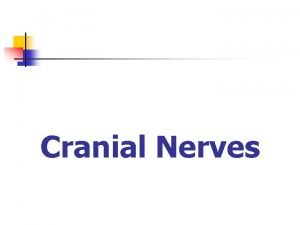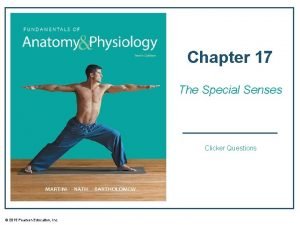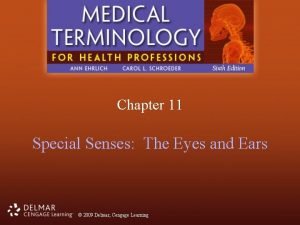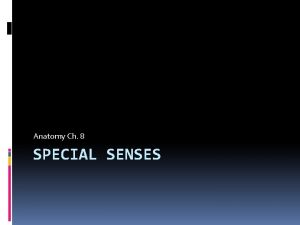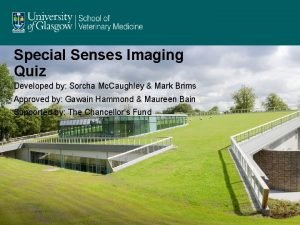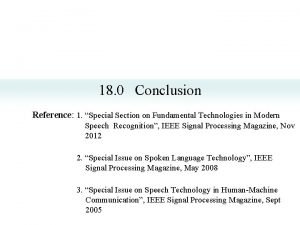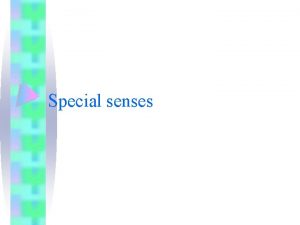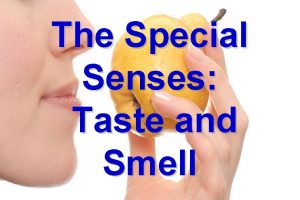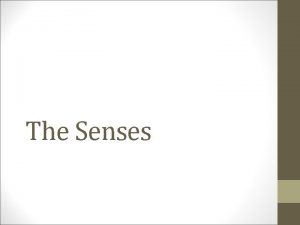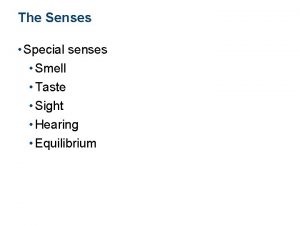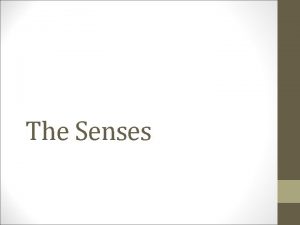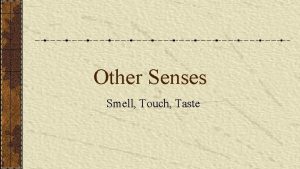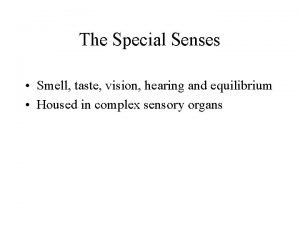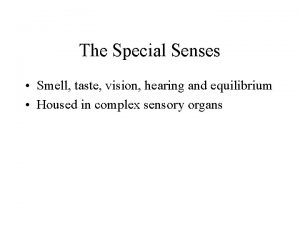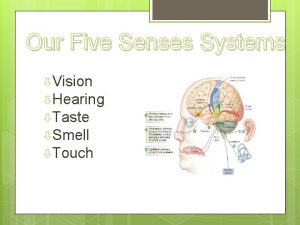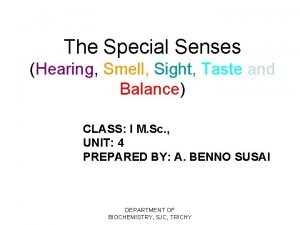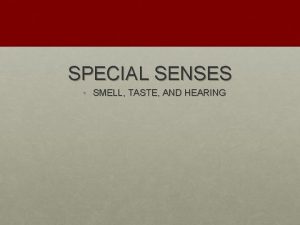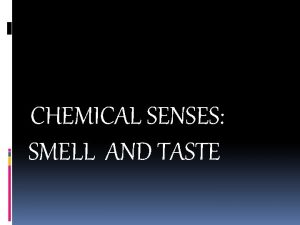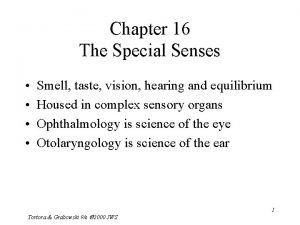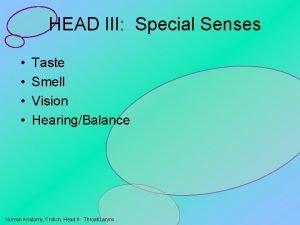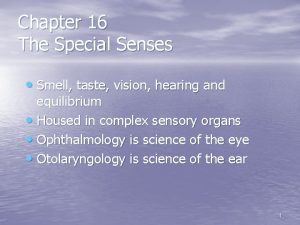Special senses Vision Hearing Smell Taste Smell Anatomy




















- Slides: 20

Special senses

• • Vision Hearing Smell Taste




Smell • Anatomy – Olfactory mucus: in the roof of nasal cavity near the septum – Contain olfactory receptors (bipolar neurone) – Axons collected in bundles called fila olfactoria




Olfactory pathway • Fila olfactoria inter olfactory bulb » » synapse with mitral and tufted cells :

• » » from mitral cells lateral and intermediate stria start » » end on ipsilateral cortex

• » » from tufted cells medial strai start then cross the midline & end on granular cells in opposite side (contralateral)


• Impulses travel along the olfactory tracts to the limbic system – (also involved in emotions and memory • Impulses are interpreted in olfactory cortex – Deep in temporal lobe and base of frontal lobe

Physiology of olfaction • Molecules dissolve in mucus layer » » combine with receptors on cilia • » » stimulate adenylat cyclase » » increase intracellular c. AMP • » » opening of Na channels » » receptors potential » » AP in olfactory pathway

Physiology of olfaction • Human can differentiate between 2000 -4000 odours • Adaptation can occur to pleasant and nasty smells due to changes both in receptors and central connections

Pathophysiology • Anosmia: loss of smell sensation • Due to damage to olfactory epithelium

Pathophysiology • Parosmia (dysosmia) • Alteration in smell sensation

Pathophysiology • Hyperosmia (increase in smell sensation) • Adrenal insufficiency

Pathophysiology • Hyposomia (decreased smell sensation) • Vitamin A deficiency
 Beach side sight
Beach side sight The chemical senses taste and smell review worksheet
The chemical senses taste and smell review worksheet Distinguish between general senses and special senses.
Distinguish between general senses and special senses. Messiners
Messiners Anatomy and physiology chapter 8 special senses
Anatomy and physiology chapter 8 special senses Houses the receptors for hearing
Houses the receptors for hearing Tastebud anatomy
Tastebud anatomy Flow chart of taste and smell
Flow chart of taste and smell Chapter 42 hearing speech and vision problems
Chapter 42 hearing speech and vision problems Medico dental vision hearing
Medico dental vision hearing Special senses physiology
Special senses physiology 5 special senses
5 special senses The cones of the retina are coursera quiz answers
The cones of the retina are coursera quiz answers Thermoreceptors
Thermoreceptors Cn v test
Cn v test Chapter 17 special senses answer key
Chapter 17 special senses answer key Chapter 11 special senses the eyes and ears
Chapter 11 special senses the eyes and ears Eye anatomy
Eye anatomy Special senses quiz
Special senses quiz Physiology
Physiology Conclusion of special senses
Conclusion of special senses







